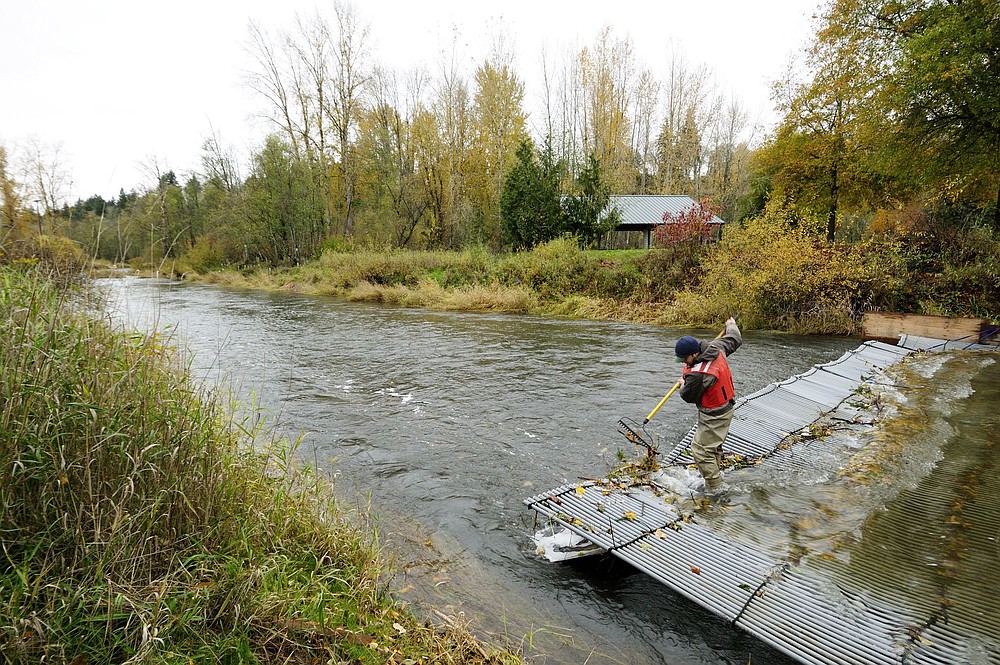Salmon appear to be recolonizing Salmon Creek.
At least that’s the preliminary indication of state biologists who have been trapping and tracking fish using a small number of radio tags and a weir spanning the creek near Klineline Pond.
At first blush, the idea of salmon in their namesake creek doesn’t seem surprising.
However, in the case of the creek flowing through Vancouver’s northern tier, the appearance of coho salmon high in the watershed gives hope to the local residents trying to revive wild salmon runs in an increasingly urban environment.
Last year, Clark County refashioned a 700-foot stretch of the channel below the rebuilt Highway 99 bridge over Salmon Creek.
The county is contracting with the state to check the trap, place radio tags on spawning steelhead and coho and then find out how long it takes to pass the reconstructed channel. “Are fish moving through it?” said Julie Grobelny, with the Washington Department of Fish and Wildlife.
The early results are promising.
Grobelny found a spawned-out coho salmon carcass last year in the creek’s upper reaches in the Venersborg area.
That’s noteworthy because, until last year, coho would have been unlikely to make the 6- to 8-foot leap where the creek poured across an old sheet piling under the Highway 99 bridge. When the county built its $15.6 million replacement bridge, engineers widened the stream channel and created a series of boulder-lined channels to ease salmon migration.
Even though it’s easier for salmon to travel through the creek, it’s tough for them to live in it.
The creek drains 89 square miles of forests, farms and some of Clark County’s fastest-growing neighborhoods. It violates state standards for temperature, turbidity, dissolved oxygen, chlorine and fecal coliform bacteria.
In the summer, the creek’s flow dwindles to a trickle.
Four years ago, the federal government cited the economic pressure to continue to build, dike and develop land along the creek’s banks in its decision to drop Salmon Creek’s status as “critical habitat” for wild salmon and steelhead.
“Because of the level of development that persists in the Salmon Creek drainage, the impervious surfaces and the growth plans in Clark County, it wasn’t designated,” said Dan Guy, supervisory biologist for National Marine Fisheries Service in Southwest Washington. “It was a tough decision.”
It was tough because a growing cadre of area residents has taken an interest in improving salmon habitat there, Guy said.
Despite its problems today, it isn’t called “Salmon Creek” for nothing. State fisheries biologist Josua Holowatz said the stream’s meandering path through low-lying forested wetlands, complete with pools with beaver dams, would have been ideal salmon habitat before modern human settlement.
“Coho love that,” he said.
Holowatz said low summer flow is especially problematic for salmon, which thrive in cold, fast-flowing water. The proliferation of concrete and rooftops undermines the landscape’s natural ability to infiltrate rain and replenish underground aquifers. A healthy supply of groundwater boosts summertime stream flows and provides space for fish.
“You can only raise so many cows on an acre,” he said.
Erik Robinson: 360-735-4551, or erik.robinson@columbian.com.



